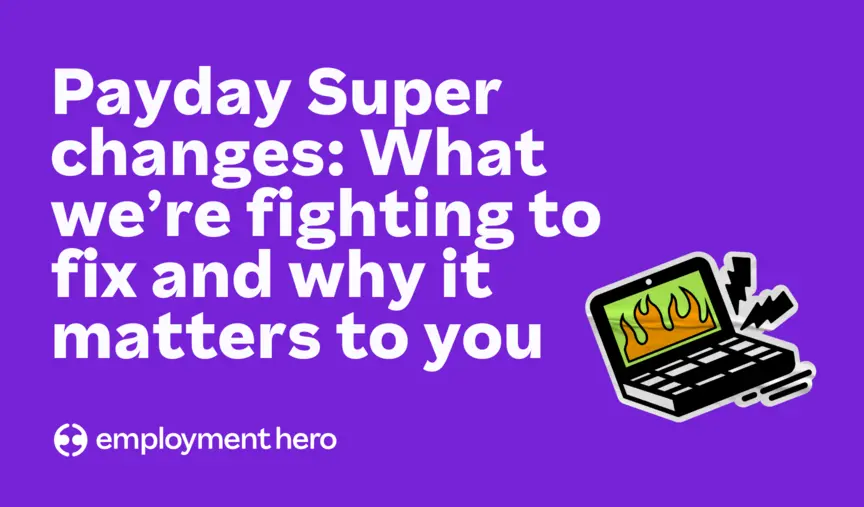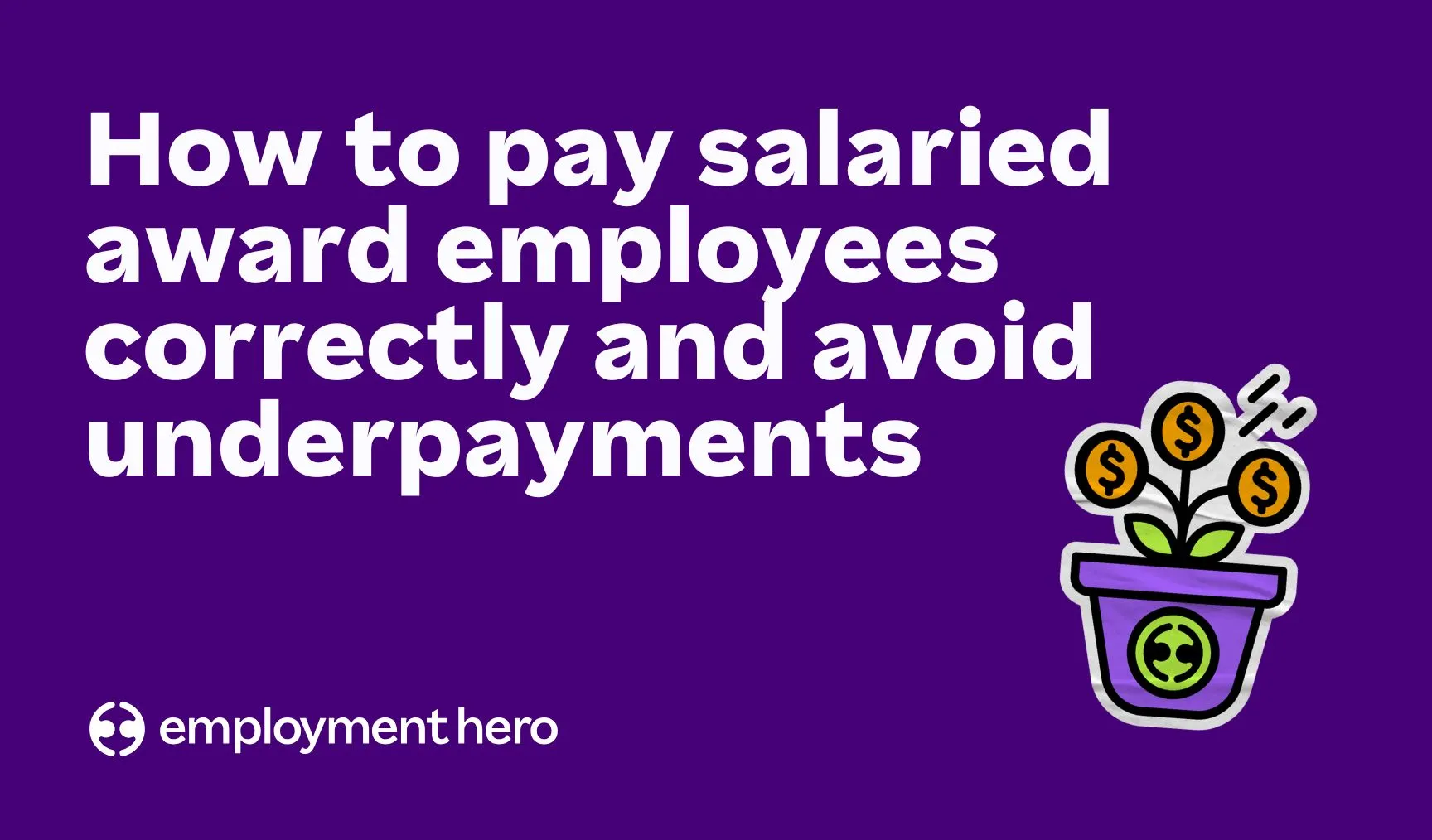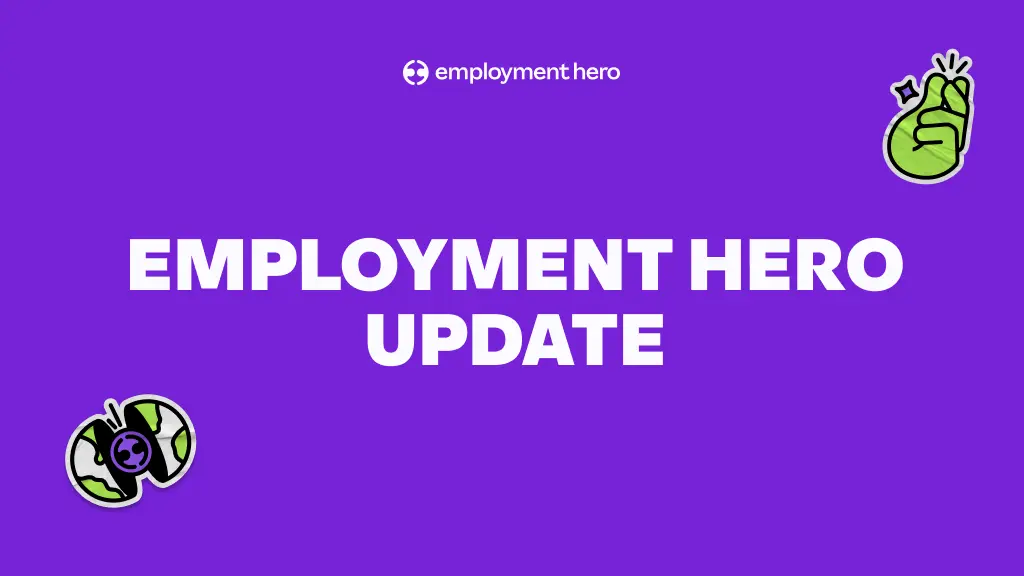Payday Super changes: What we’re fighting to fix and why it matters to you
Big changes are coming to how superannuation is paid in Australia. Here’s what we’re asking Treasury to seriously consider updating in the Bill.

Big changes are coming to how superannuation is paid in Australia. Known as Payday Super, these reforms aim to ensure workers receive their super payments every payday instead of quarterly. It’s a great idea in principle, but unless some key changes are made, it could have serious consequences for small businesses and their employees across the country.
At Employment Hero, we support the spirit of these reforms. But as they currently stand, the proposed rules could push many small and medium-sized enterprises (SMEs) to the edge of insolvency. That puts jobs and super payments at risk.
Here’s what we’re asking Treasury to seriously consider updating in the Bill that is brought to Parliament, and why it matters for business owners, employees, and the broader economy.
1. Roll out the reforms in phases
Right now, the proposal expects every employer, regardless of size, to be fully compliant by 1 July 2026. That might be manageable for big corporations, but it’s a huge challenge for smaller businesses with fewer resources.
Our recommendation:
- Large businesses (200+ employees): Start from 1 July 2026.
- Small and micro businesses (<200 employees): Get an extra year, starting from 1 July 2027.
This phased approach mirrors past successful changes like Single Touch Payroll and gives smaller businesses the breathing room they need to adapt.
2. Give employers more time to pay
The current proposal gives businesses just seven calendar days to pay super after each payday. But the existing payment systems, based on outdated batch file transfers, just aren’t fast or reliable enough to meet that deadline.
Our recommendation:
- Change the employer window to business days rather than calendar days, and
- Extend the payment window to at least 10 business days, until faster, real-time infrastructure is fully in place.
3. Modernise the super system infrastructure
Right now, the legal pressure is on employers, but the systems they rely on (like super funds, gateways, and clearing houses) aren’t being asked to modernise.
Our recommendation:
- Require all super funds to accept real-time payments via the New Payments Platform (NPP).
- Upgrade outdated SuperStream technology to real-time API-based messaging.
- Ensure all payment gateways return clear, machine-readable confirmation and error messages.
4. Make penalties fairer and provide more support
If a small business makes an honest mistake like missing a deadline due to delays in third-party systems, it could face steep penalties of up to 60%, which aren’t even tax-deductible. That’s not just harsh – it’s unfair.
Our recommendation:
- Scale penalties based on business size and intent.
- Offer a 6–12 month grace period for first-time or accidental breaches.
- Fund support and education programs through the ATO and software providers.
Why this matters to all Australians
Our data shows that the average small business will need to come up with an extra $124,615 in working capital just to stay compliant. For many, that’s money they simply don’t have.
Remember:
- Over 95% of Australian businesses are small or medium-sized.
- If even a fraction of them collapse, jobs will be lost, and super won’t be paid at all.
In short, no super system can work without healthy, supported employers. By making a few targeted changes, we can uphold the spirit of Payday Super while protecting the very businesses that keep Australia running.
What’s next?
We’ve submitted these proposals to Treasury and will continue advocating for a fairer, more sustainable rollout of the Payday Super reforms.
Whether you’re an employer, employee, or simply someone who cares about Australia’s economic health, this affects you. Let’s get it right.
Disclaimer: The information in this article is current as at 26 June 2025, and has been prepared by Employment Hero Pty Ltd (ABN 11 160 047 709) and its related bodies corporate (Employment Hero). The views expressed in this article are general information only, are provided in good faith to assist employers and their employees, and should not be relied on as professional advice. The Information is based on data supplied by third parties. While such data is believed to be accurate, it has not been independently verified and no warranties are given that it is complete, accurate, up to date or fit for the purpose for which it is required. Employment Hero does not accept responsibility for any inaccuracy in such data and is not liable for any loss or damages arising either directly or indirectly as a result of reliance on, use of or inability to use any information provided in this article. You should undertake your own research and to seek professional advice before making any decisions or relying on the information in this article.
Related Resources
-
 Read more: How to pay salaried award employees correctly and avoid underpayments
Read more: How to pay salaried award employees correctly and avoid underpaymentsHow to pay salaried award employees correctly and avoid underpayments
Learn how to pay salaried, award-covered employees correctly and avoid underpayments, with insights from recent court rulings.
-
 Read more: Employment Hero and SEEK resolve Federal Court proceedings
Read more: Employment Hero and SEEK resolve Federal Court proceedingsEmployment Hero and SEEK resolve Federal Court proceedings
Employment Hero and SEEK have resolved Court proceedings. SEEK will reinstate API access so customers can post jobs to SEEK…
-
 Read more: Australia’s flipped labour market: Teens and tradies cashing in while productivity stalls
Read more: Australia’s flipped labour market: Teens and tradies cashing in while productivity stallsAustralia’s flipped labour market: Teens and tradies cashing in while productivity stalls
Australia’s flipped labour market sees teens and tradies cash in. Wages are surging for youth and construction, but falling hours…
























